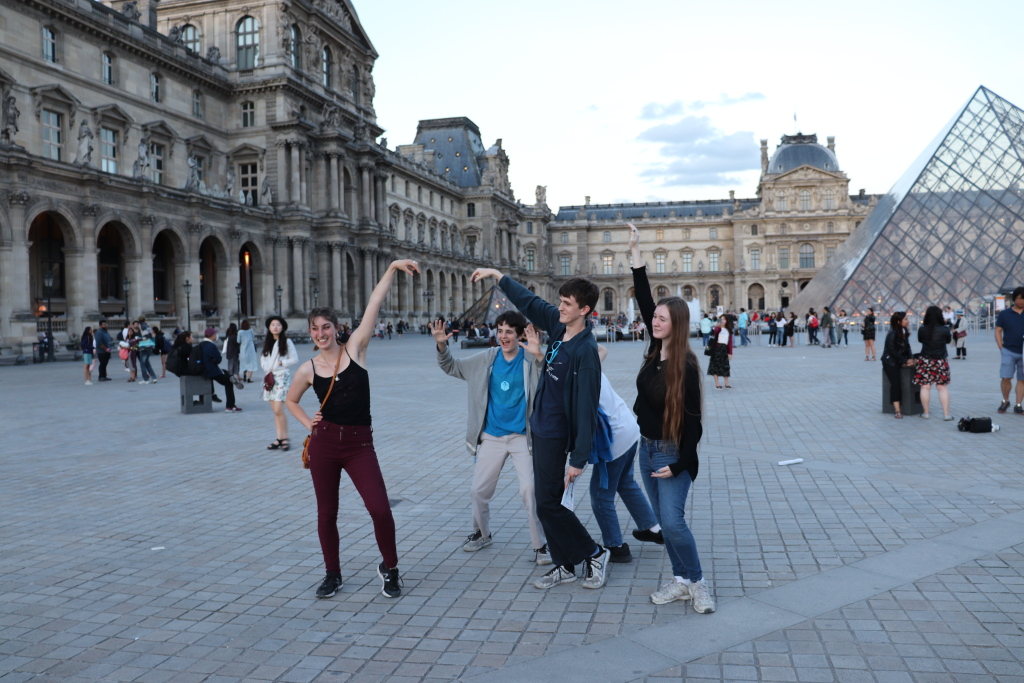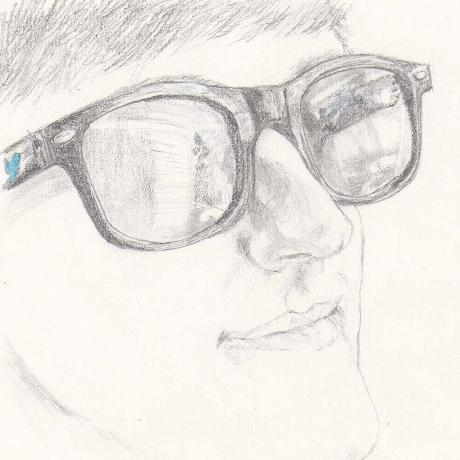After yesterday’s walking up (and down) 668 steps, we thought what better way to spend today than walking through the Louvre? How big can it be, really?
Pretty big, it turns out.
So big that it has its own museum, about itself. A meta-museum, if you will.
Although to be fair, the meta-museum wasn’t so much about the Louvre as a museum but about the building it was in. Originally, it was a relatively small castle on the Sienne in the 1200s. Over time, it wasn’t needed for defense anymore, and so the French royalty moved into it and expanded it bit by bit. Eventually the royalty moved out (that, or get beheaded), and it turned into a museum.
I heard once that it would take 2 full days to really do the Louvre. The Louvre is laid out with three major parts: Two wings, and a large square in between them. Each has 4 levels of exhibits. There were exhibits ranging from Greek Antiquities from 6500 B.C. up to Arts of Africa, Asia, and the Americas in 1900 (the emphasis of the museum is very much Euro-centric). In the mere 7 hours we were there, we didn’t fully complete any one exhibit (except the meta-museum). Out of 17 different exhibits, we only set foot in 5. Ellen, Jason, and I split from the group to visit the Greek Antiquities, on my insistence, before heading up to the Italian Paintings section.
Each of the exhibits had a lot of the same thing. Where most museums might put a piece that’s similar to another in storage, the Louvre apparently would just as well put them on display. So the Greek exhibit had what seemed like a thousand statues of Aphrodite, and the Italian Paintings section actually had a thousand paintings of Jesus.
We saw the Venus de Milo, which is the statue of Aphrodite without arms. It was bigger than Ellen had thought it was, and smaller than I had thought it was. In reality it’s just slightly larger than person-sized.
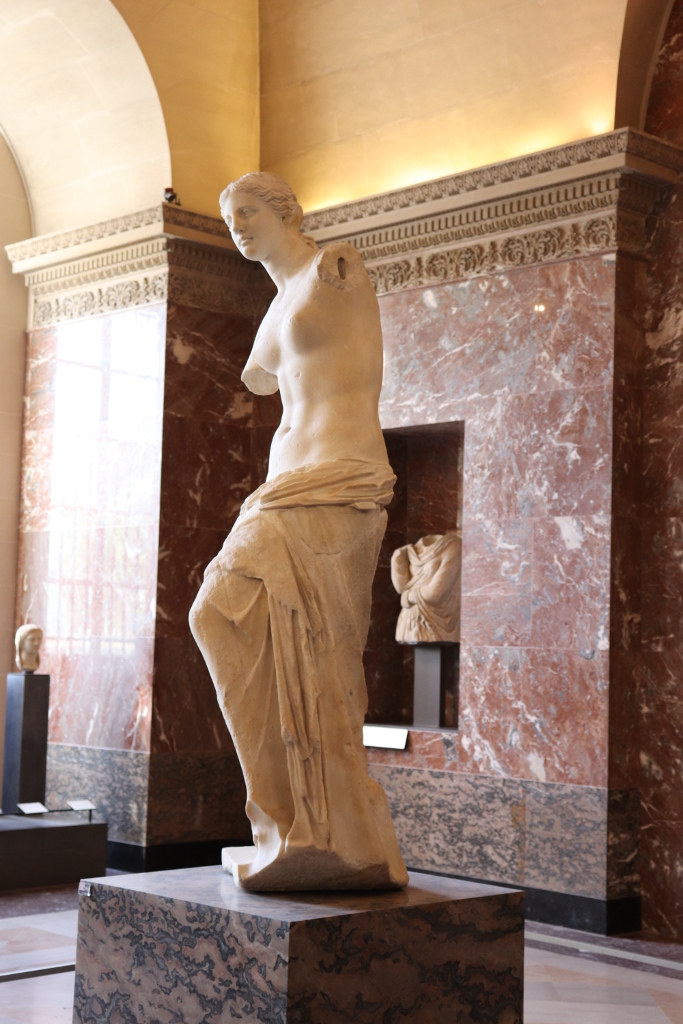
We also walked past The Hermaphrodite, which is the Greek sculpture of a hermaphrodite laying on a mattress. The mattress itself was done by Bernini, and actually looked soft like a mattress, going against the hard marble it was built out of. I felt tempted to lean over and sleep on it, but there was a barrier in the way.
A lot of the Greek statues had been renovated, and not always in ways that held true to the original statue. One statue of Aphrodite had been mistaken by a Renaissance renovationist as a statue of Psyche, so they added butterfly wings.
After looking at a decent fraction of the statues on display there, we wandered up to the Italian Paintings, where the Mona Lisa was displayed. We went, we looked at it.
It wasn’t big. Or, I thought (maybe I blaspheme), particularly good. Not that I could replicate it, or anything even near it. But there were a hundred people crowded around this one small painting, all along on a pillar, when on the walls of the room are other much more interesting paintings. This was true of the Venus de Milo, as well. There were several dozen people crowding around that statue of Aphrodite, when it was just one at the end of an entire corridor full of Aphrodite statues.
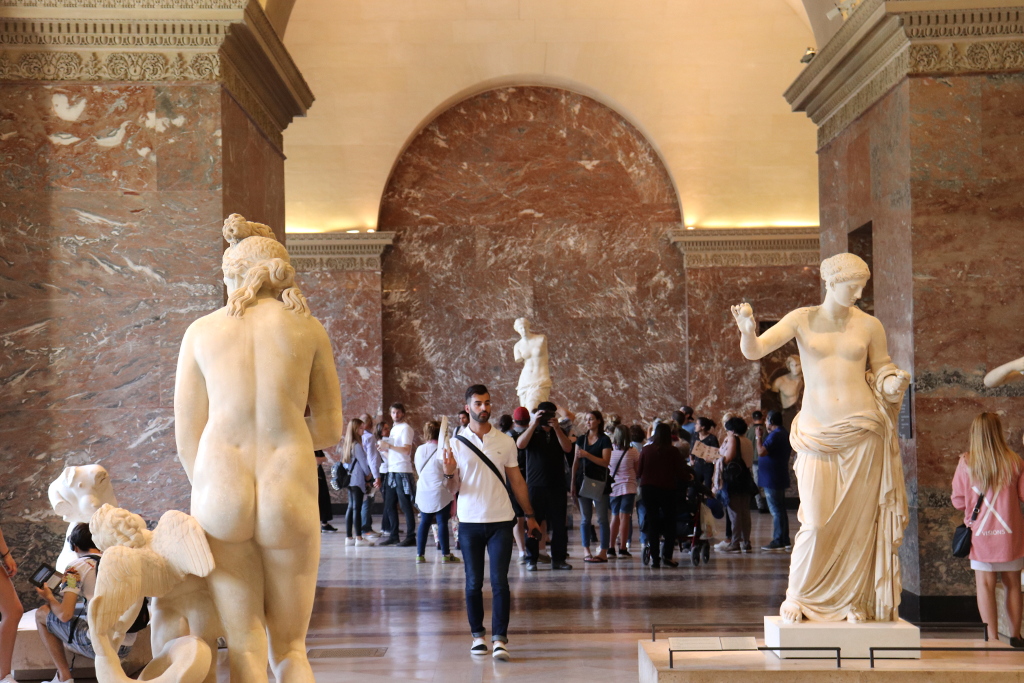
That’s the Venus de Milo in the middle.
Some of the other ones had arms. Some of them even had wings. One had a hand on its back, where a child had been sculpted as hugging her, but then the child’s arm was lost leaving a hand stuck on her back.
Throughout the museum, even the vaulted ceilings were pieces of art in themselves.
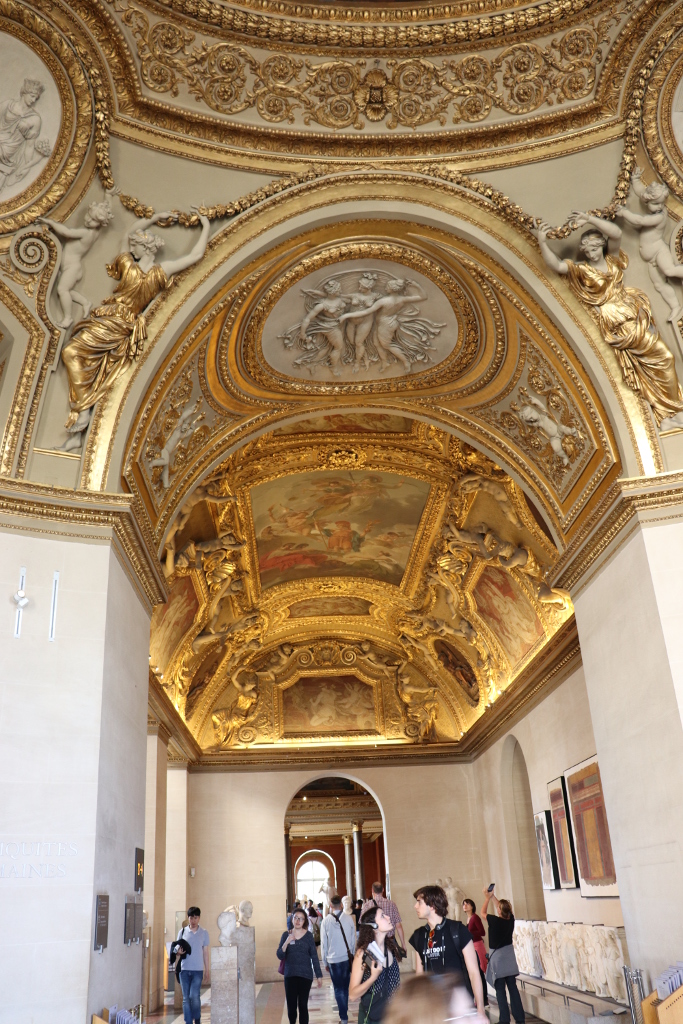
We stopped for a quick dinner after the Mona Lisa, as we were all starving by this point. Along the way we stopped by the inverted glass pyramid.
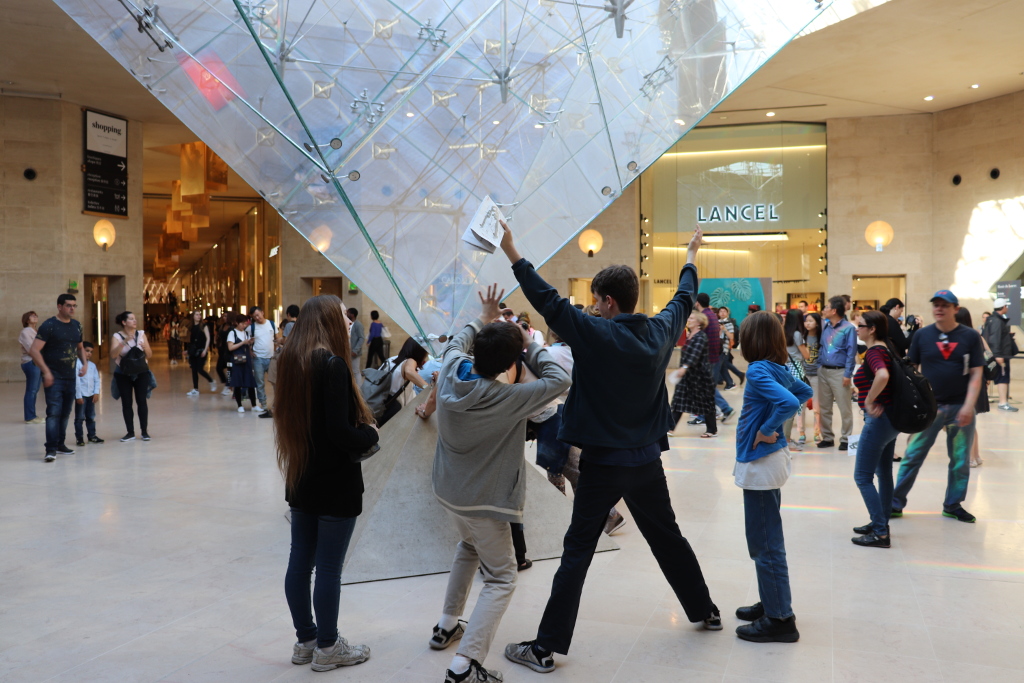
After dinner we headed up to the old apartment of Napolean, and then to the French artists. Along the way we saw how nice it was to be king.

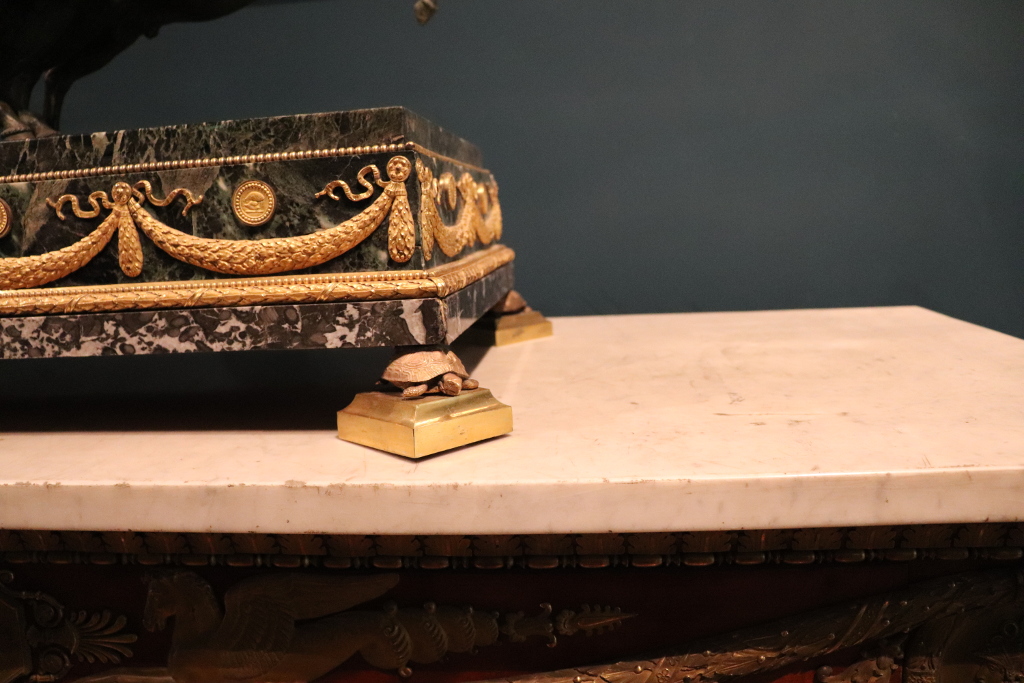
Ryan’s favorite part might have been the collection of armor and weapons from Napolean’s time.
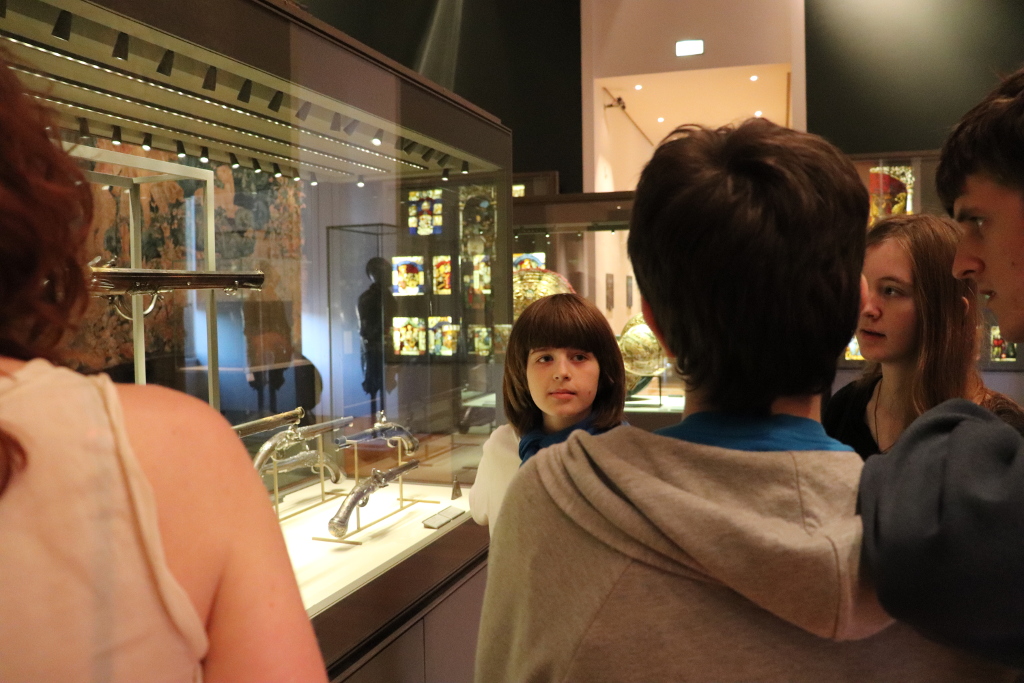
By the time we got to the French Paintings section, there were only 20 minutes until the museum closed. Anyone can appreciate a room full of Monet in 20 minutes, right?

To wrap up the day, we photobombed somebody in front of the glass pyramid.
